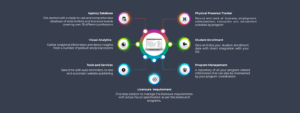
I consider myself privileged! Not everyone gets the opportunity to transform an idea into reality.
More than a decade ago, while working as a graduate research assistant at the Office of Research at UT Arlington, I was tasked to put together a database of faculty expertise. I was asked “Can we have a searchable internal database to track the expertise and resources on our campus so everyone can find each other easily?”
The solution could have been very straightforward – let’s put together yet another database (like we have less of them on campus), and let users search that database. This is when we uncovered another problem. How are we going to keep this data up to date? We cannot expect our faculty to spend their precious time filling out more forms. The solution had to evolve beyond just search and find to make this worth their while. And this is how the foundation for Mentis® was laid out 10 years ago.
For lack of a better term, the project got dubbed as “the Profile System” and we created these neat profiles for almost all assets and resources on campus and let faculty, or their designated editors, update them. The search and find was paramount, but we also built in several other features to reuse the information in the system – export to Biographical sketch, University CV format etc.
What started out as a small in-house project suddenly grabbed the attention of many universities, purely because of its simplicity and ingenuity. Nothing of its kind existed – I am talking about a time when MySpace from Microsoft was just launched.

Other institutions with the same vision embraced it and the Profile System found a home in the servers of many more universities in Texas. Within UT Arlington, the system grew organically to meet the needs of various departments. From completing their proposal certification form, submitting their IRB proposal, completing trainings, to requesting changes to courses and program catalogues, the system ended up becoming the single system that faculty wanted to interact with, and administration wanted to be able to run cross-functional reports from. The system was able to effectively break departmental silos, facilitate collaboration and make information and processes within the university transparent.
You can call us short-sighted but we never imagined the system would scale to a point where it would become inefficient to maintain and scale any further. It was time once again to take the next leap, and revamp the Profile System into its next avatar – Mentis.
We do learn from our past, and this time, we decided to build a platform that could withstand change, multiple apps and had the intrinsic capability to grow with the university. Mentis is not just a collection of apps – we only say that to only make it sound simple. Mentis is really a way of enterprise management. Staying true to its roots, Mentis continues to make it easier for faculty to get work done, for administration to really feel the pulse of the organization, and for departments to improve and automate their business processes, saving everyone time and money in the process.
Starting last month, Mentis can now be used as a service in the cloud. This is definitely not the final destination but the beginning of a new journey for Mentis and I continue to feel very privileged to be a part of its spectacular growth.